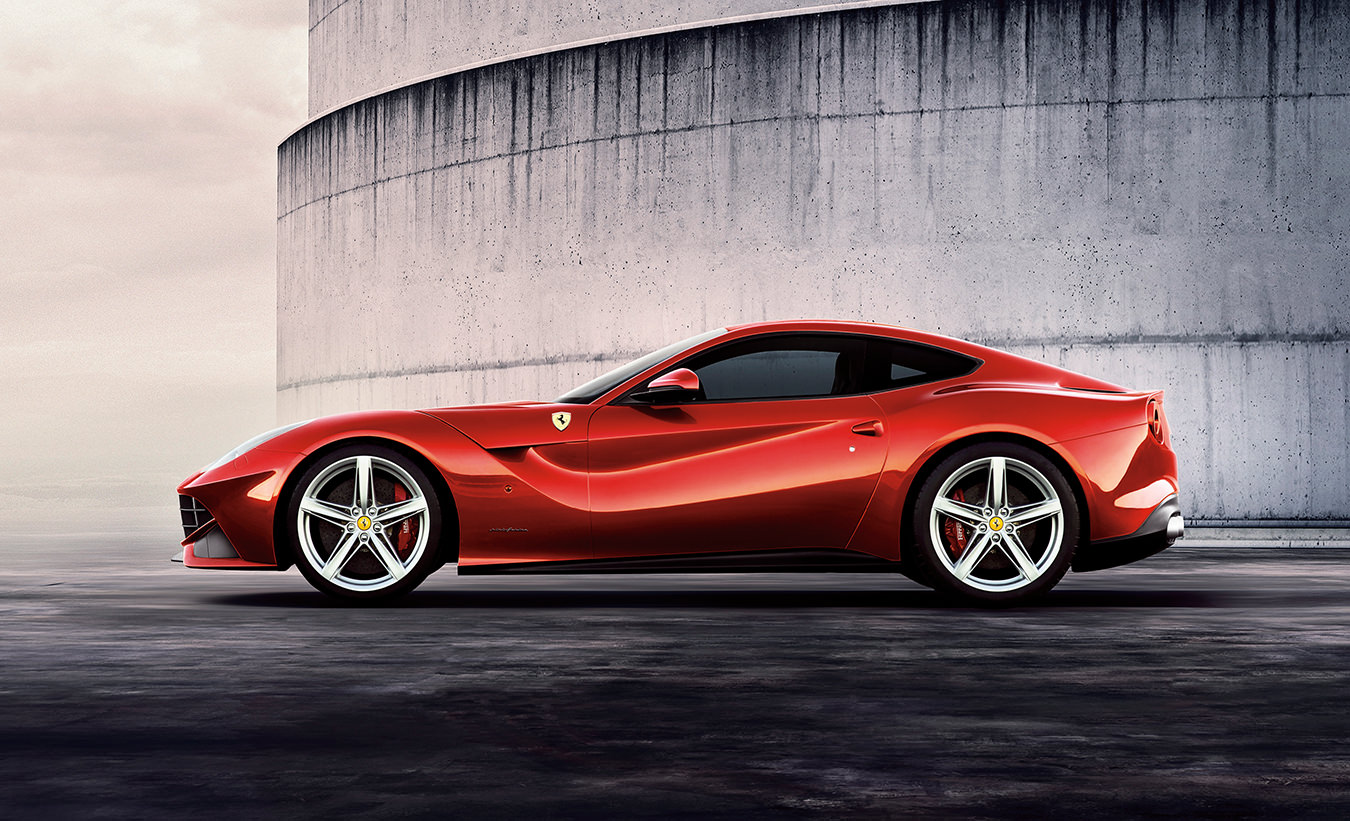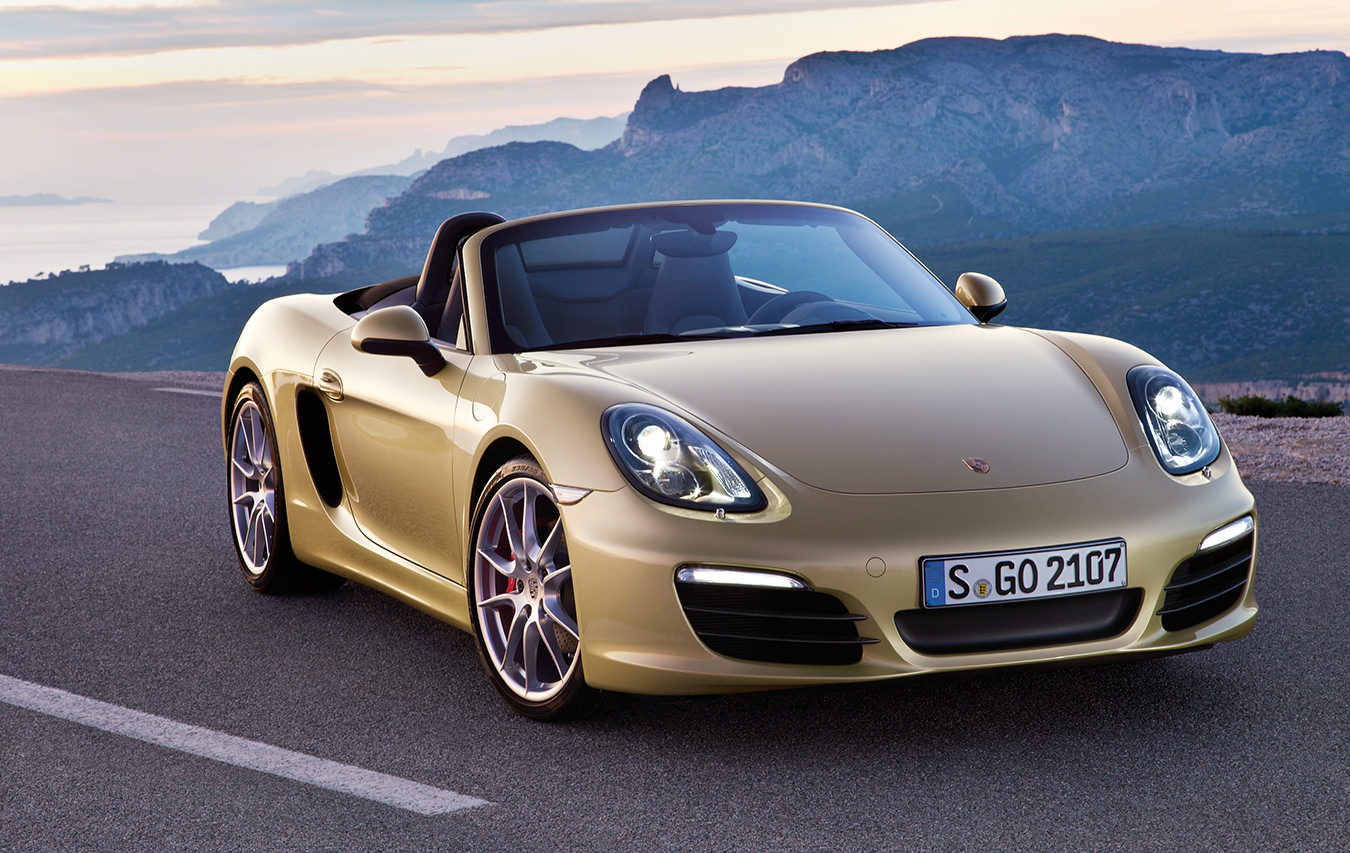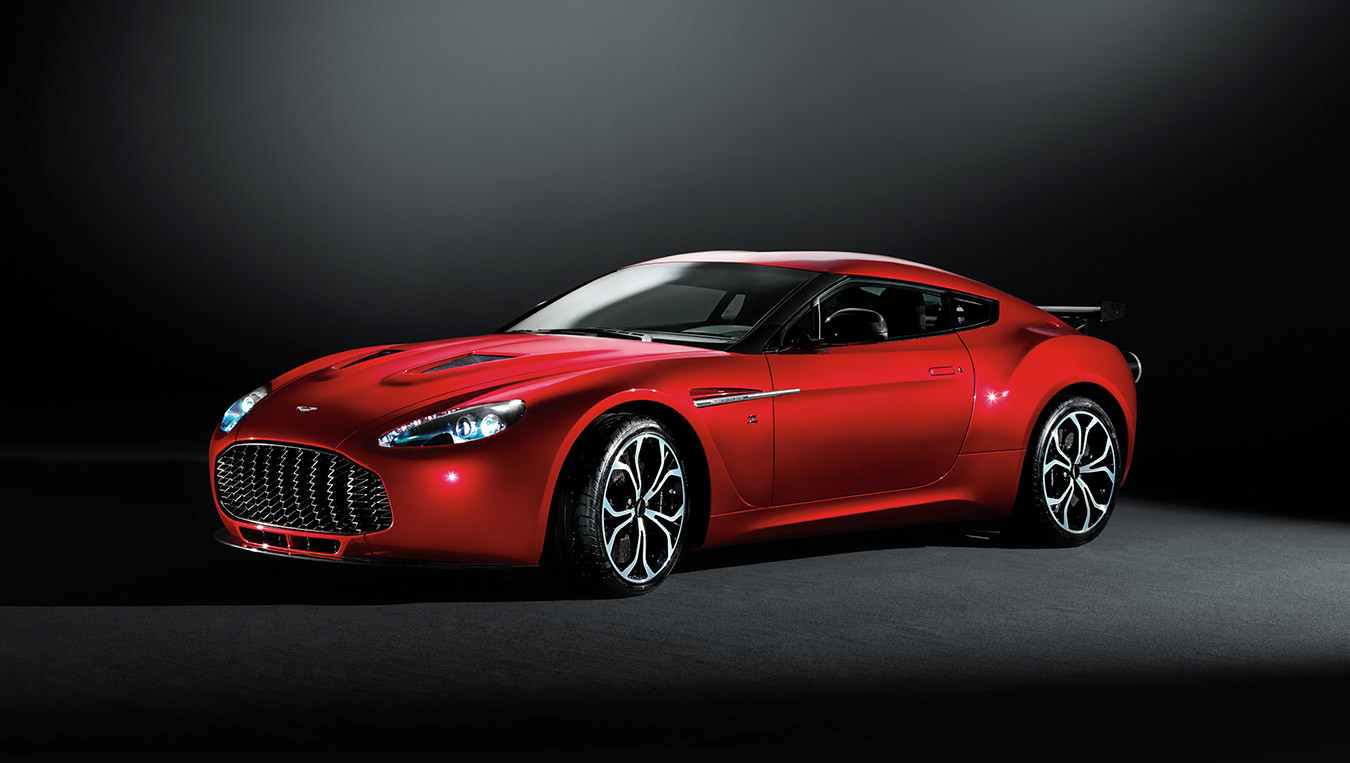-
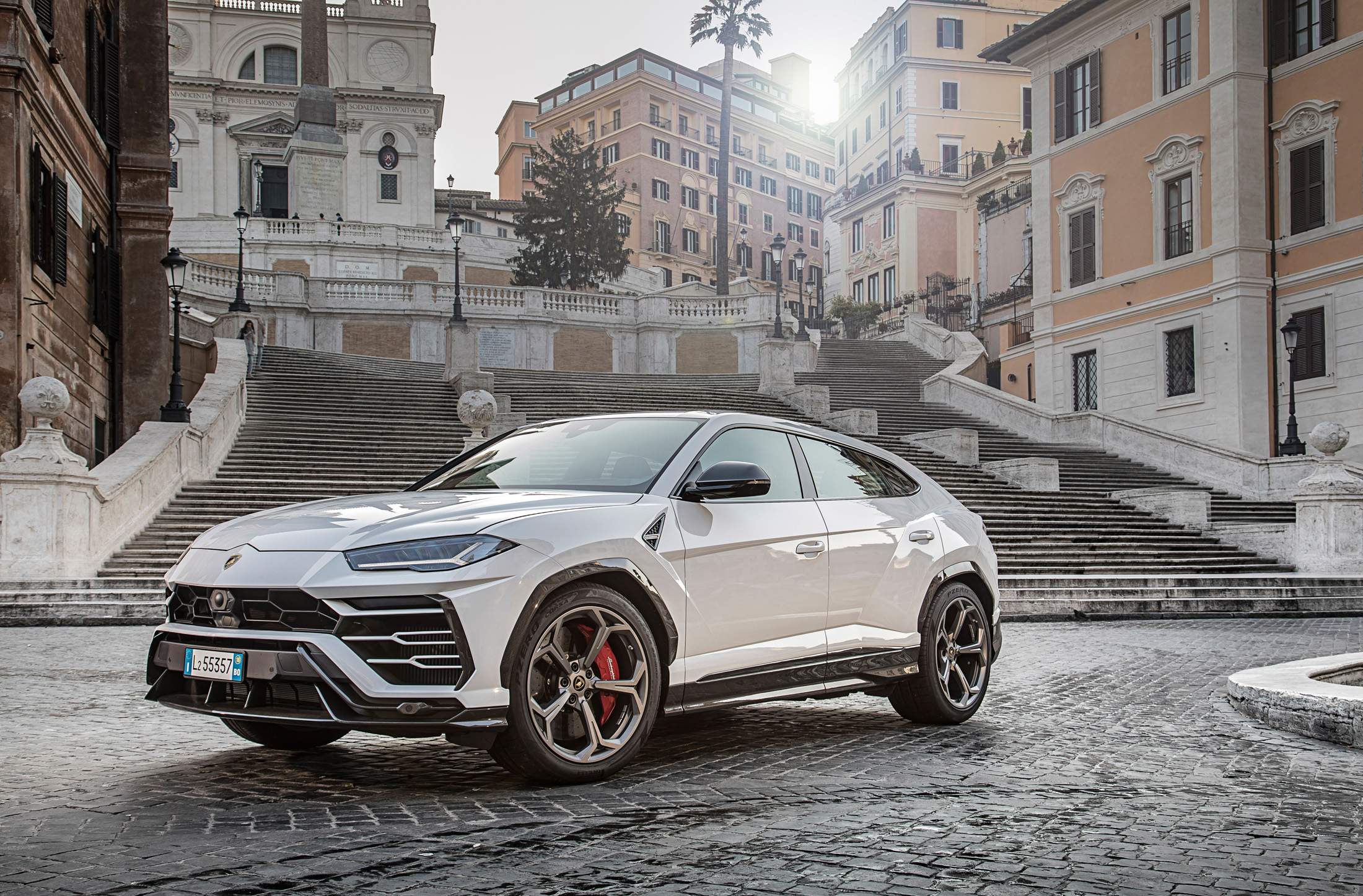
The Lamborghini Urus is fast, wild, and—an SUV.
-
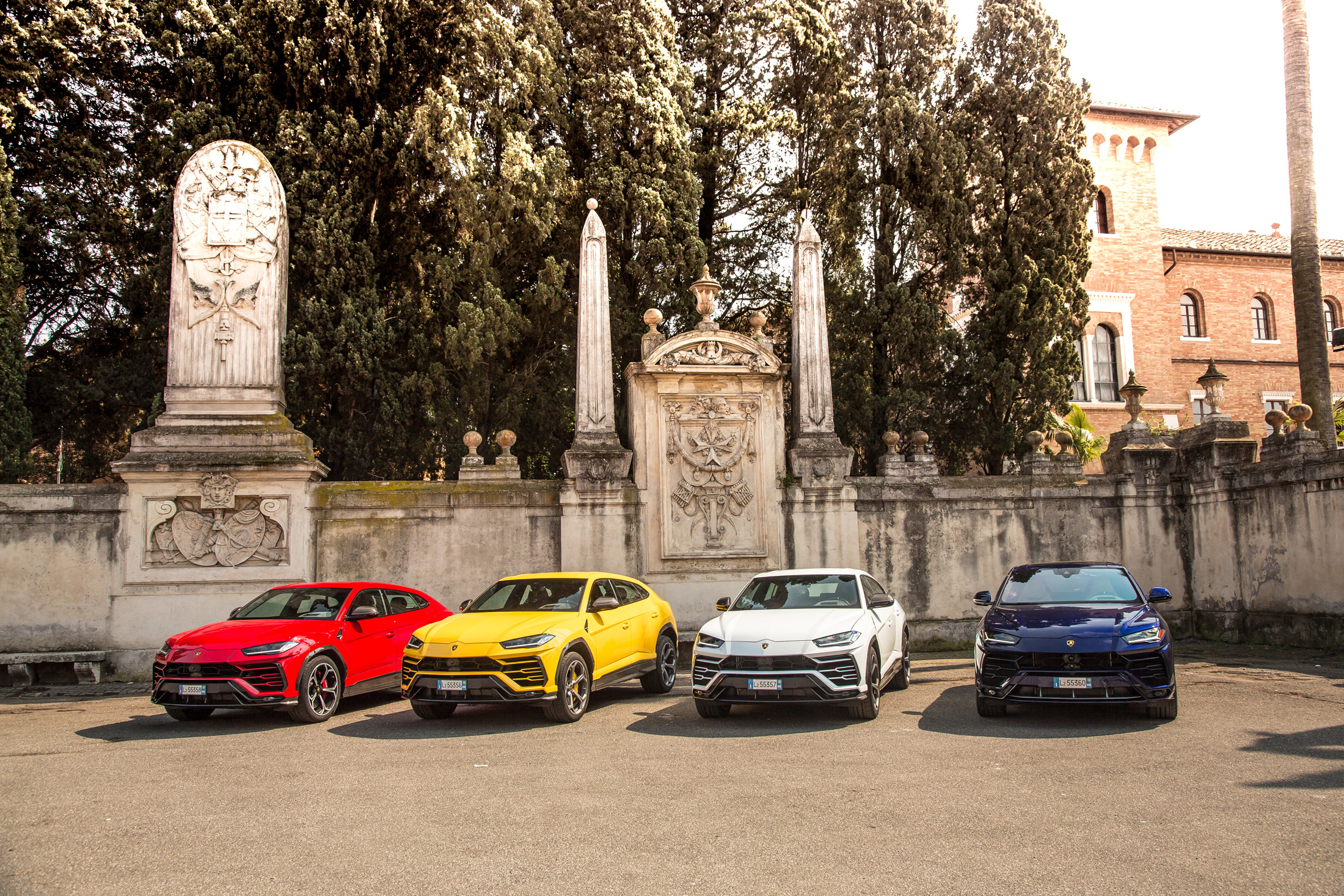
Urus’ paint options from left to right: Rosso Anteros, Giallo Auge, Bianco Icarus, and Blu Astraeus.
-
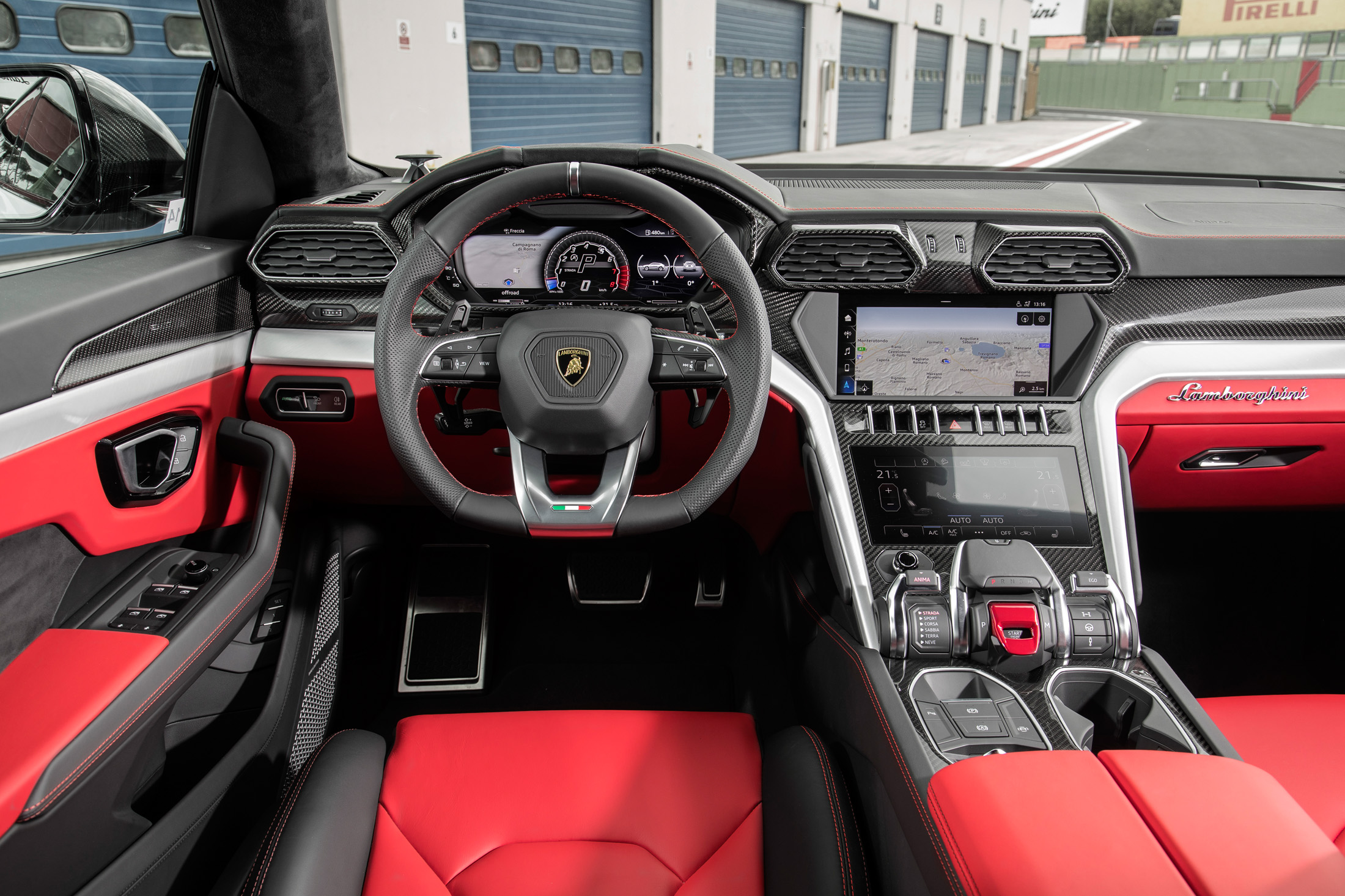
Bianco Icarus interior, one of the options for a fully-customized Urus.
-
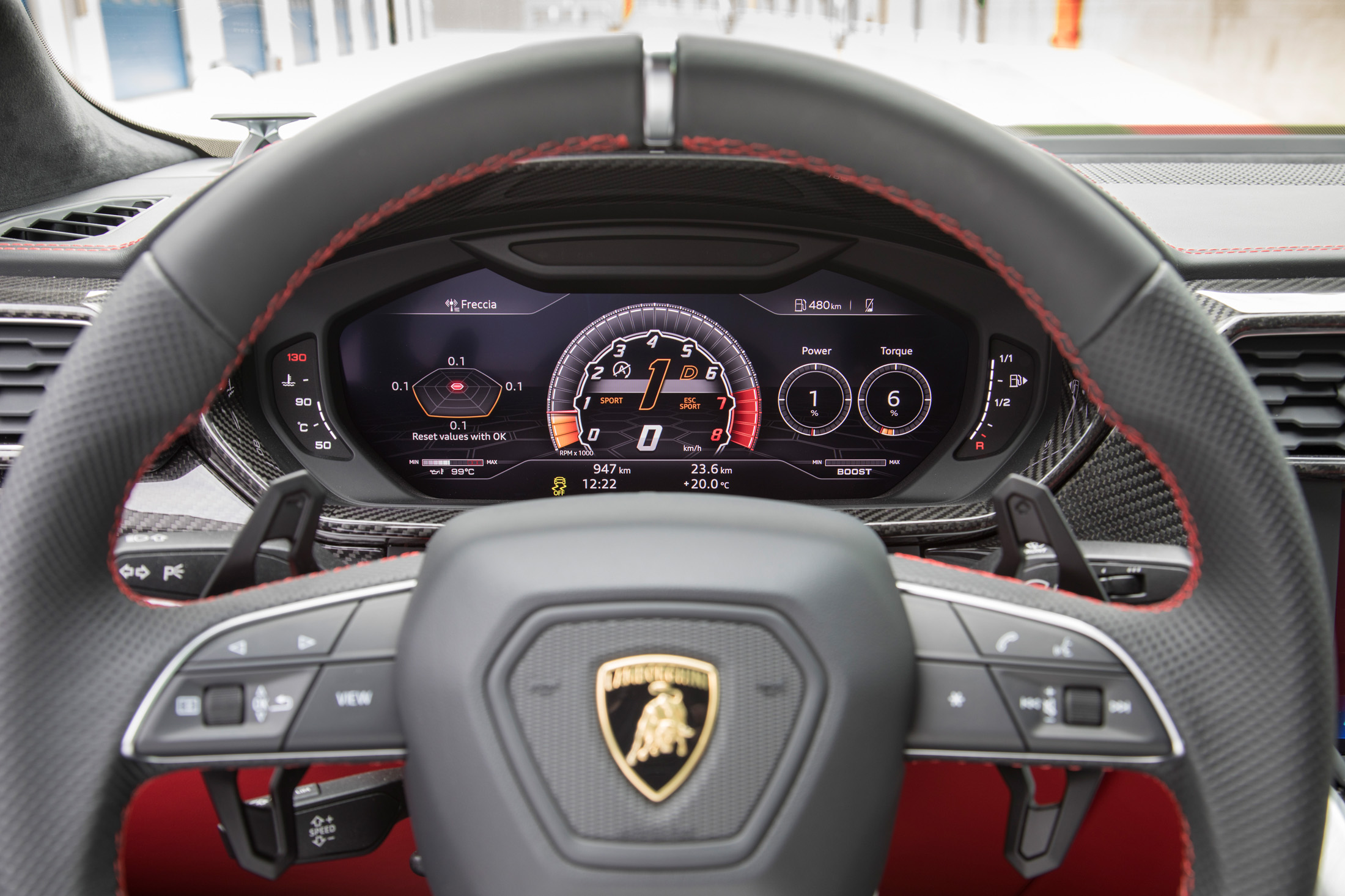
Bianco Icarus interior.
-

Giallo Auge and Blu Astraeus.
-

Blu Astraeus interior.
-
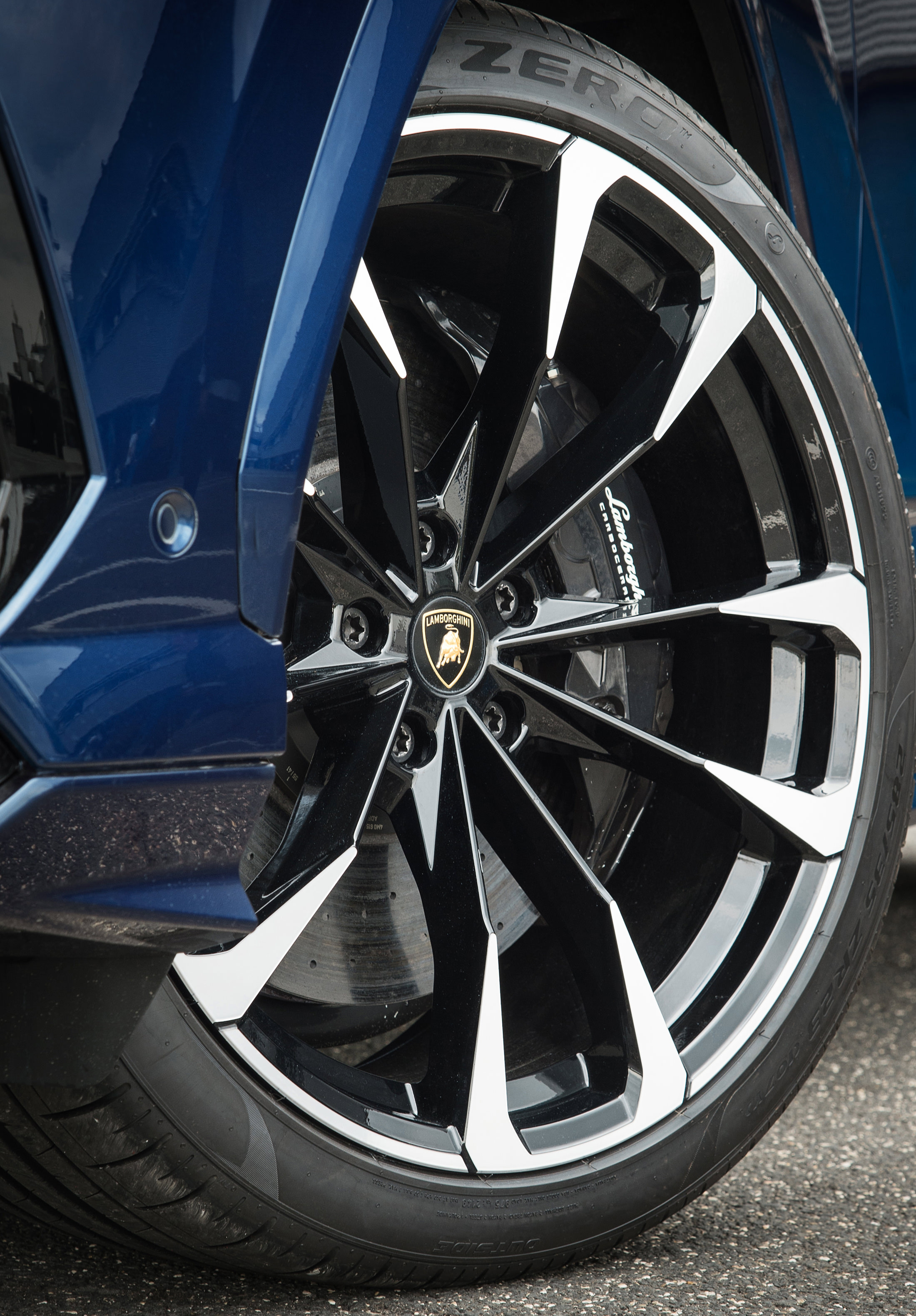
Blu Astraeus with customizable rim and brake pad detail.
-
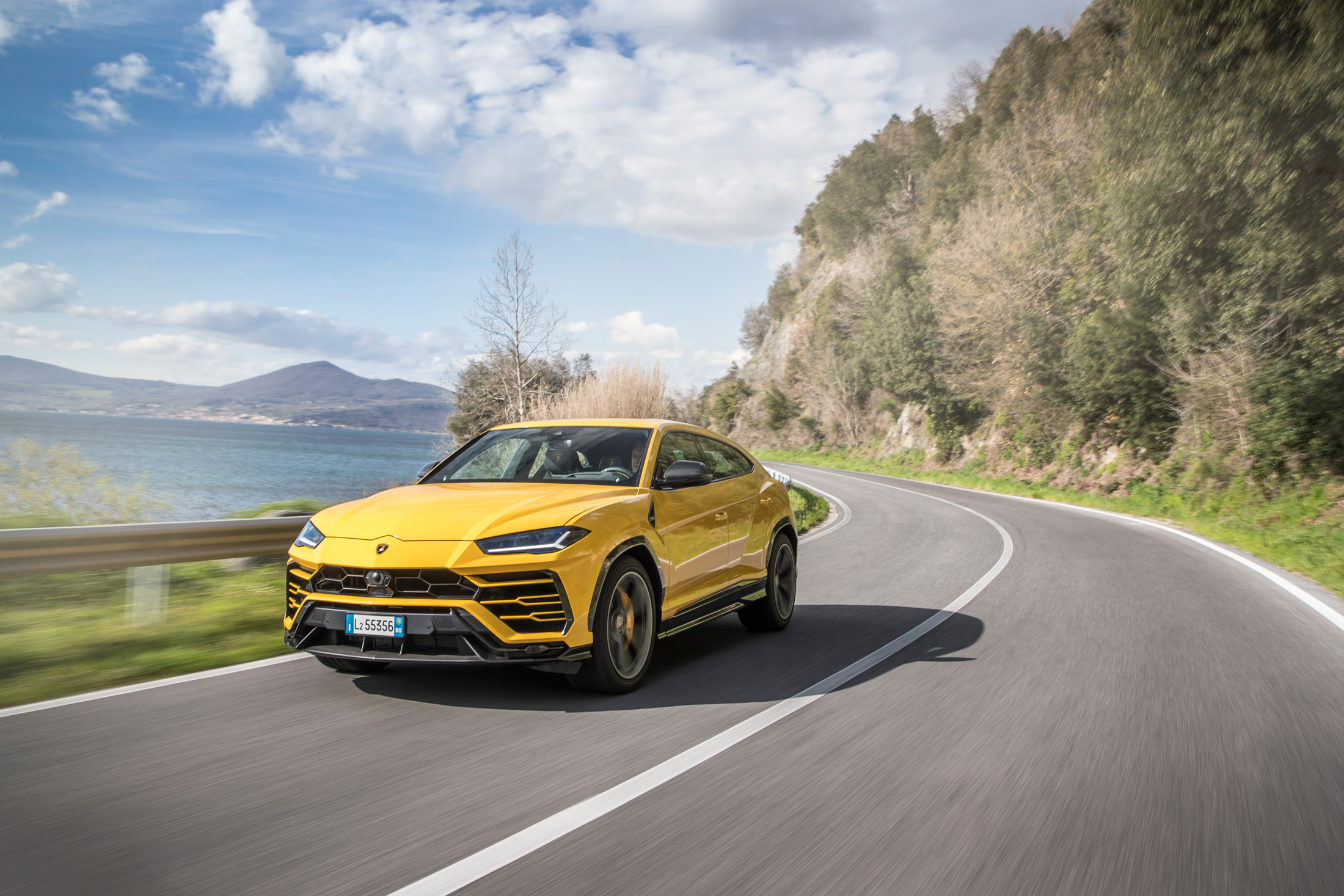
Giallo Auge.
-

Giallo Auge with customizable rim and brake pad detail.
-
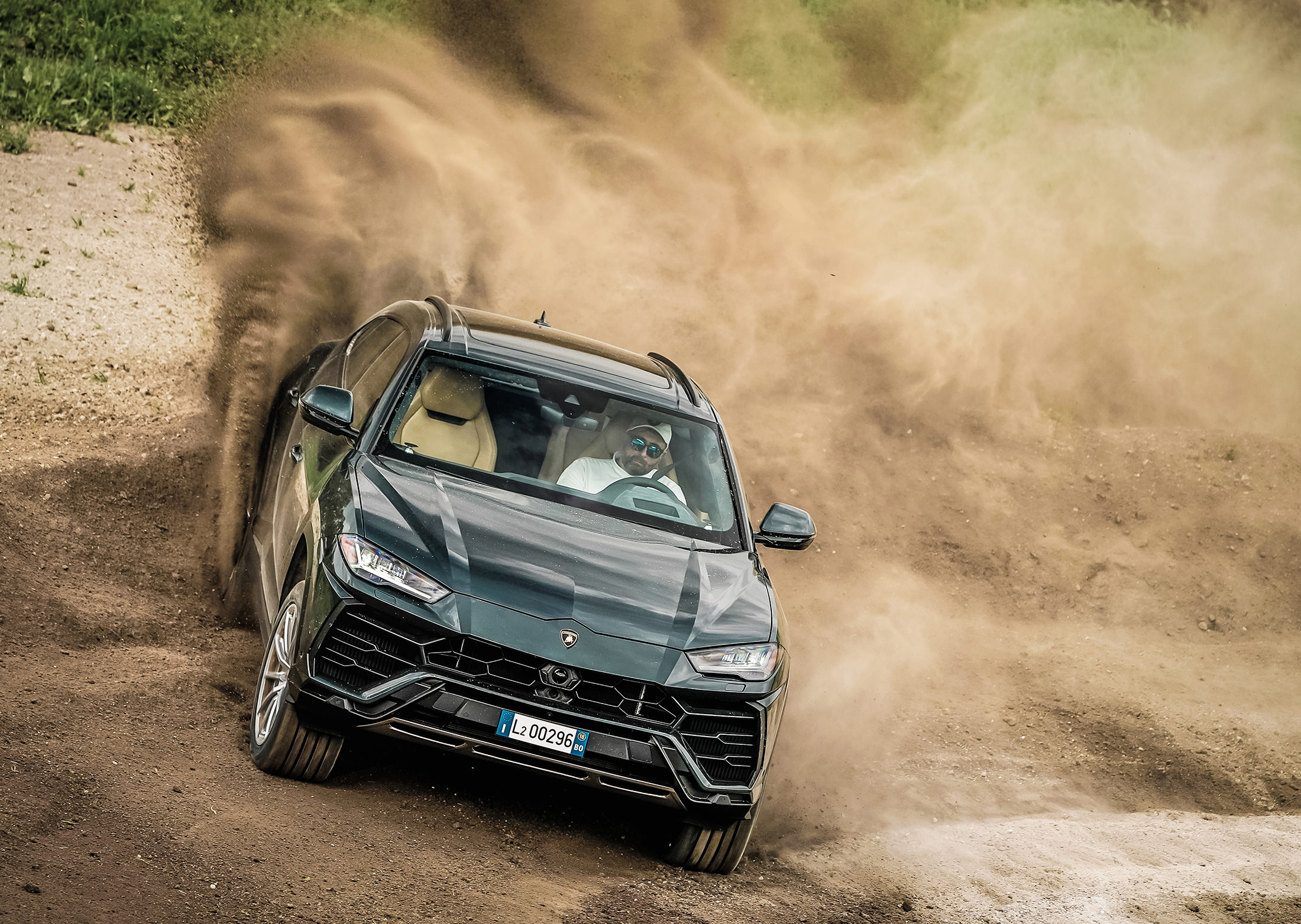
Grigio Lynx off-road.
-
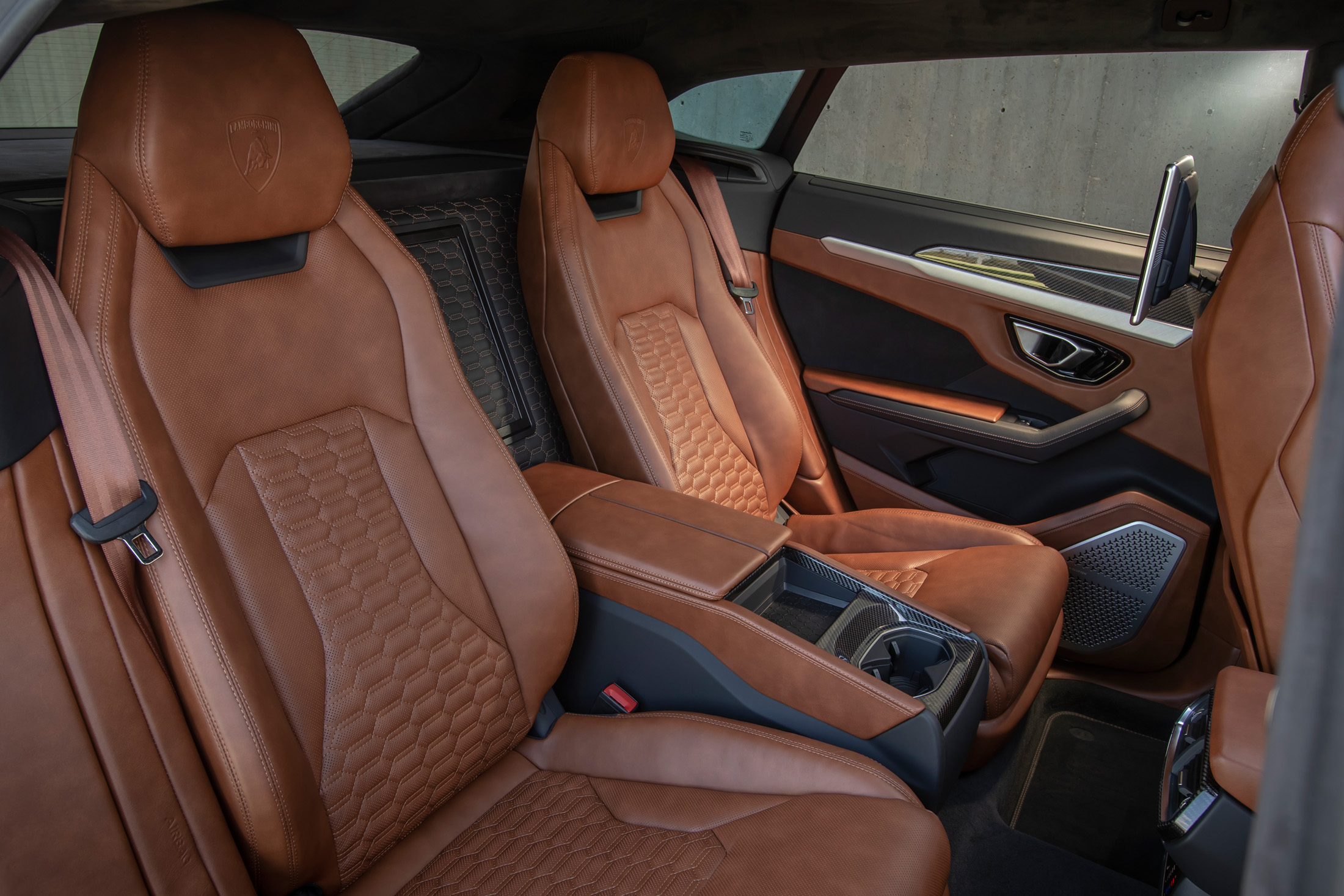
Grigio Lynx interior option.
-

One of three infotainment TFT screens.
The Lamborghini Urus
A new beast, different from the old beast.
Jumping on the brakes as my speedometer crests 230 km/h, I scrub off an incredible amount of speed as I enter a tight right-hand turn called Campagnano on the Vallelunga racing circuit (located north of Rome). Crossing the apex and back on the power, I surge forward on a wave of torque from a hugely powerful V8 engine, then shift into third gear with a pull of the paddle under my right fingers. I can hear turbochargers alongside the V8 roar. My tires chirp and call out as I brake hard and carve into the next corner. I’m driving the latest beast from Sant’Agata Bolognese (Lamborghini’s HQ); it’s fast, a bit wild, oh, and it’s an SUV.
Officially Lamborghini’s second-ever SUV, the Urus has little in common with its boxy, V12-powered, legend-of-the-’80s predecessor, the LM002. The Lamborghini Urus is based on the same platform as the Porsche Cayenne and the Bentley Bentayga, and within the confines of a shared SUV platform, Lamborghini has attempted to apply much of the aggressive styling of its supercars, the Huracán and the Aventador.
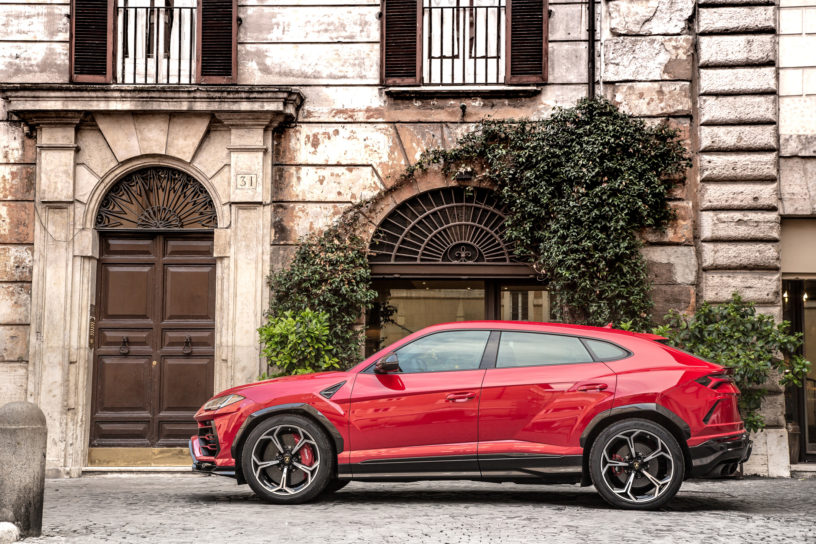
Rosso Anteros.
Unlike its sporty supercar siblings, the Urus eschews Lamborghini’s long-standing use of naturally aspirated V10 and V12 engines for a twin-turbo V8. While undoubtedly out of character for modern Lamborghini models, the decision is likely the result of a mixed set of factors, including packaging, efficiency, and dynamics for everyday driving. Regardless of the number of cylinders, the Urus has a Lamborghini-appropriate amount of power, with its 4-litre V8 making 641 horsepower and 627 lb-ft of torque. Combine this power with a cutting edge four-wheel-drive platform, proprietary tires from Pirelli, and a curb weight of 2,197 kilograms, and the Urus can make the dash to 100 km/h in as little as 3.6 seconds. That means this four-seater SUV with 616 litres of luggage capacity (1,596 with the rear seats down) accelerates as hard as a 2015 Aston Martin Vanquish.
With a goal of translating the dramatic appeal of a Lamborghini into a prosaic vehicle with maximum flexibility, the Urus may not be as wild as a Huracán Performante, but its capabilities are nonetheless impressive. Boasting high-end road car technology such as four-wheel steering, torque vectoring, and a fully adjustable suspension with active anti-roll bars, the Urus didn’t feel out of place on the track. It’s stable, the steering is fast and well boosted, and with 440 mm standard carbon-ceramic brakes up front (370 mm in rear), braking is entirely next-level. But it should be, as these are the largest brakes ever fitted to a production vehicle, and the brake disc is actually larger than the entire wheel of a base Honda Civic. And while you can feel the weight of the vehicle mid-corner, it definitely stops like a supercar.
While surprisingly quick and capable on the track, the Urus is designed to run best on (and off) normal roads. Using the special Tamburo controller in the centre console, you can select from a wide range of settings for the Urus’ driving dynamics. This includes the usual options of Strada (road), Sport, and Corsa (race), but it also extends to specialized off-road modes like Sabbia (sand), Terra (dirt/gravel), and Neve (snow). With available snow tires from Pirelli and the aforementioned 4WD and advanced air suspension, while this may be a luxury performance SUV, the Urus is more than capable of getting a little dirty.
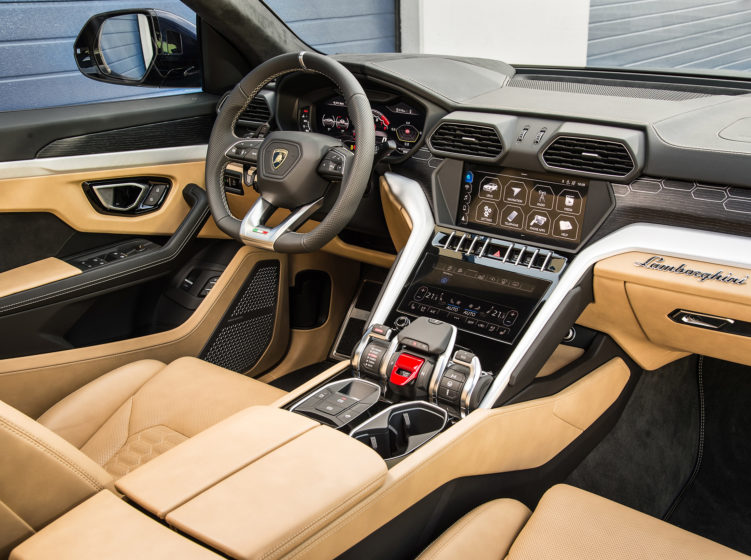
Blu Astraeus interior.
After spending some time at Vallelunga, I had the opportunity to run the Urus off-road on a sort of mini rally stage in the hilly countryside northwest of Rome. The course climbed and fell in a single track, showing not only the Urus’ strong performance in a low-grip scenario, but also its playful balance and willingness to slide on power and rotate with ease. While it’s doubtful the Urus will be seen rock crawling alongside Wranglers, it was more than happy to cut loose off the beaten path.
With track and off-road seeming very much in the realm of its skill set, I took the Urus for a drive along the winding B roads toward Lago di Bracciano. While a bit on the large side for some of the Old World streets of Italy, the Urus comes across a lot like a big and powerful sports sedan. Although the interior has the look and feel of an Aventador, the seating position is pure SUV—tall and on top of the chassis.
In a relaxed mode like Strada, the Urus’ ZF-sourced eight-speed automatic transmission is smooth, its ride is compliant, and the exhaust note is drone-free. It’s relaxed, and while the interior is quite a bold place to be, quality and spaciousness abound. I’m 6 foot 3 and I can comfortably sit in the back, even with a passenger in the seat in front of me. Should the situation demand a more spirited experience, with a quick selection of sport or race mode, the Urus flexes, drops a gear, and the exhaust note opens up with a growl. Short bits of road are eaten up with a hearty roar, and the vehicle puts on speed in a remarkable fashion. If you want to get to and from a grocery store in an awful hurry, this is your ride.
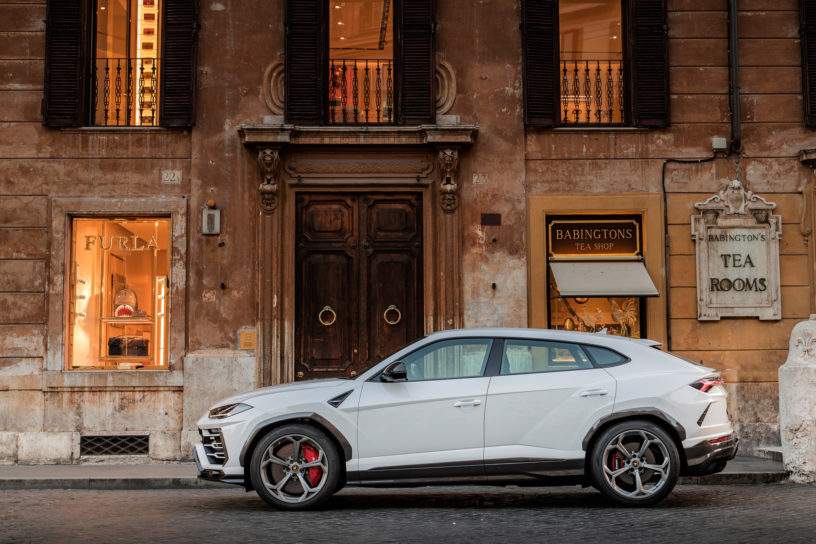
Bianco Icarus.
Given its legacy and platform, it’s not exactly surprising that the Urus is fast, capable, and fun to drive. The real question here is one of motivation. Why is Lamborghini making an SUV at all? You could point to the LM002, but the company only produced some 328 examples of it. With the Urus, the play is much more mass market. To that end, Lamborghini expects the Urus to nearly double its annual production (3,500 will be produced by the end of 2019). Perhaps more interestingly, 68 per cent of Urus preorders were made by buyers who do not own a Lamborghini—one of the reasons the auto manufacturer is making an SUV, and a plausible plot as to why the Urus is so different from the LM002.
It’s not enough that it is fast, dramatic, expensive (starting at $232,000), and has an exotic allure; Lamborghini already does all of that really well. Its success hinges on Lamborghini’s ability to also make it an errand-run car. For those who have always wanted a Lambo, but still have to be able to drop the kids off at school and pack everything necessary for a week at the cottage, the Urus is a raging bull with seating for four—plus luggage.
_________
Never miss a story. Sign up for NUVO’s weekly newsletter.

